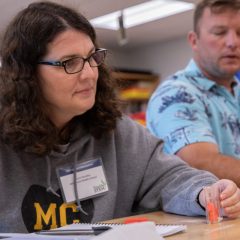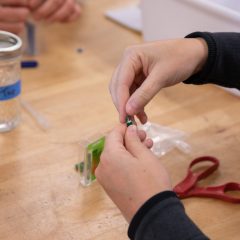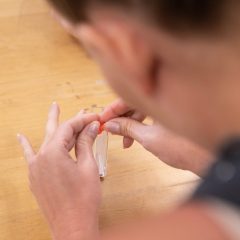Water
Water Quality
Grade Level: Middle School
Water is an important commodity in the American culture. The U.S. Department of Agriculture estimates that agriculture accounts for approximately 80 percent of the nation’s water use. In agriculture, water is used to grow fruits, vegetables and crops as well as raise livestock. Even further, water in agriculture is used for irrigation and the application of pesticides and fertilizers. In Kansas, 29 percent of corn acres are irrigated.
Maintaining good water quality is something farmers strive for to help maintain a healthy ecosystem and to preserve the water that we drink. Farmers practice proper natural resource management to meet domestic water quality standards. Cooperation between agriculture and domestic water users is necessary to provide adequate water quality for both parties.
In this lab, students will test water quality from difference sources of water. This lab is best suited to be delivered right after the Soil Erosion Lab. Preventing soil erosion is the number one way that Kansas farmers can protect from fertilizers and pesticides getting into the water supply. Farmers are not the only ones who impact water quality in our communities. Consumers, businesses and industries can also impact water quality. Fertilizer and pesticides could all be applied on golf courses, lawns and parks and all have an impact on water quality. This lab is designed to get students thinking about how
About Kansas Corn STEM
Investing in Kansas teachers and students is a priority for the Kansas Corn Commission. We are committed to providing materials and training to support STEM education while fostering an understanding of how corn farming and agriculture fit into our daily lives. Professional development workshops are offered to teachers seeking to expand their knowledge and inquiry-based teaching skills. Workshop participants receive free lab supplies needed for the lessons.
Workshop InfoThis lesson is the work product of the Kansas Corn Commission. Our lessons are written in collaboration with Kansas teachers for use in the classroom. Teachers may copy and share this curriculum. Use of this product for commercial or promotional use is prohibited without express permission of Kansas Corn.
Newsletter Sign Up
Each quarter we release a newsletter written by teachers for teachers. This is an easy way to keep up with what is happening at Kansas Corn STEM.
Subscribe Today!




